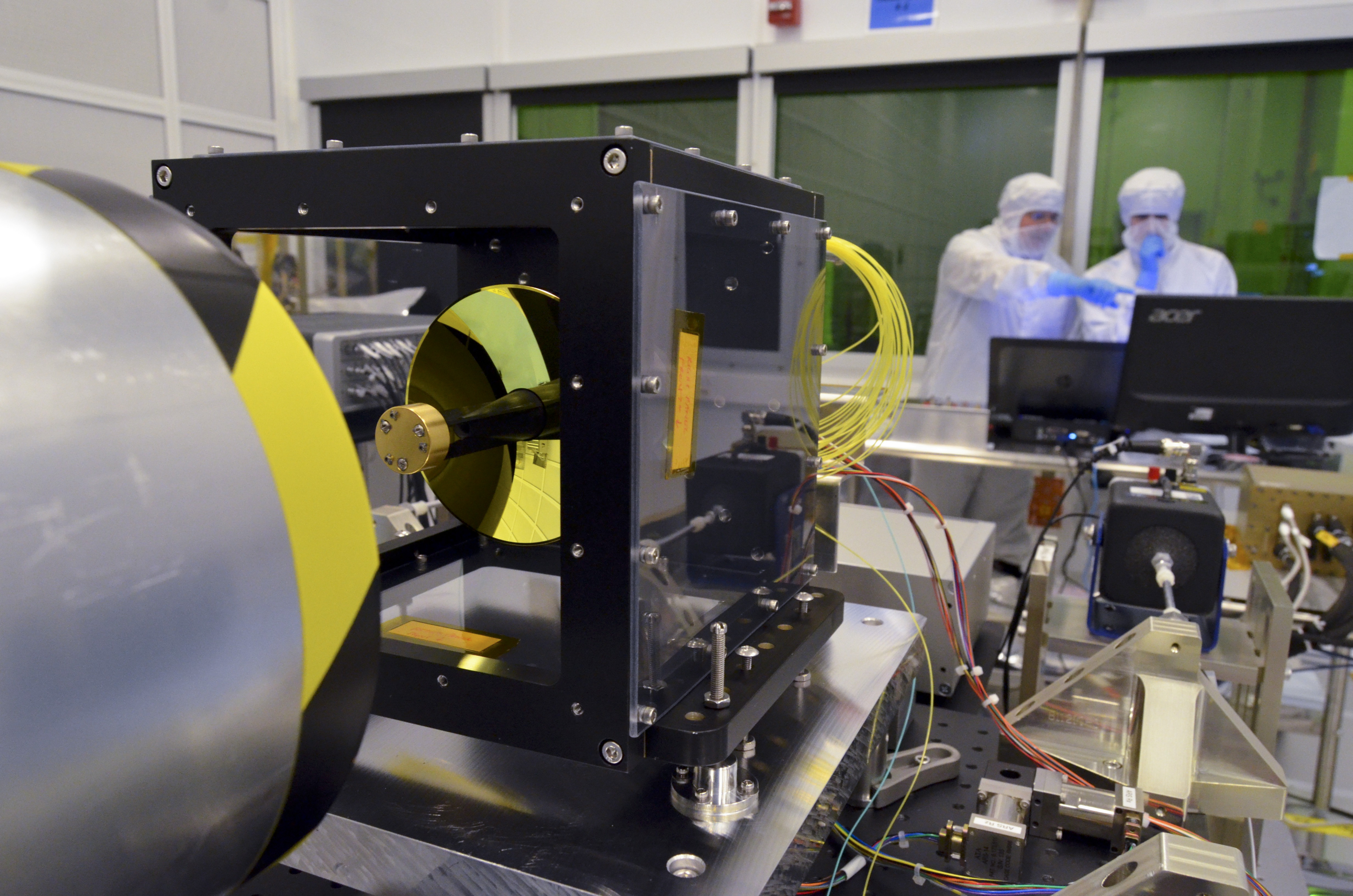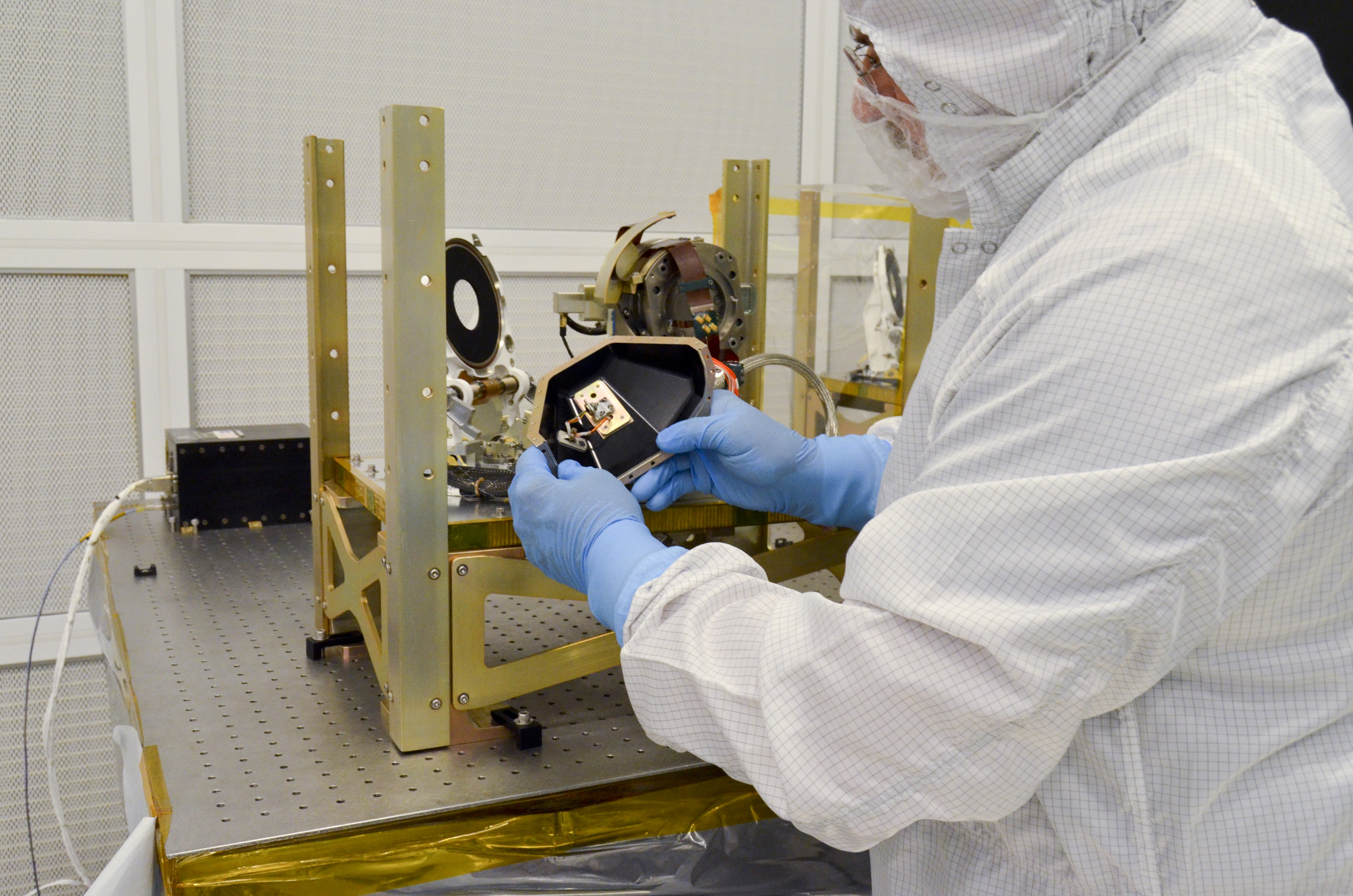Dial-Up Space Communications System Gets 'High-Speed' Upgrade

NASA is making strides toward launching its laser-based space communications system, which officials say could become the "high-speed internet of the sky."
The system, called the Laser Communications Relay Demonstration (LCRD), will use a beam of light to send data to Earth from space and back up to 100 times faster than current radio-frequency (RF) communications systems can. This technology is also much smaller, meaning future spacecraft communications systems could possibly weigh less and require less power — critical factors in planning long-duration space flights to Mars and beyond, NASA officials said in a statement.
"LCRD is the next step in implementing NASA's vision of using optical communications (laser communications) for both near-Earth and deep-space missions," Steve Jurczyk, associate administrator of NASA's Space Technology Mission Directorate, which leads the LCRD project, said in the statement. "This technology has the potential to revolutionize space communications, and we are excited to partner with the Human Exploration and Operations Mission Directorate's Space Communications and Navigation program office, MIT Lincoln Labs and the U.S. Air Force on this effort." [Laser Communications Could Be 100X Faster (Video)]
LCRD builds on the successful Lunar Laser Communications Demonstration (LLCD) experiment performed by NASA's Lunar Atmosphere and Dust Environment Explorer (LADEE) spacecraft in 2013. At the time, the LLCD was the first of its kind to show the feasibility of high-speed laser-based communications systems beyond low Earth orbit. The LCRD will expand on that work to demonstrate the technology's operational durability and performance in varying weather conditions as well as its longevity, as the spacecraft is designed to operate for two to five years, according to the statement.

Now, engineers are testing whether each component can withstand launch conditions. The LCRD mission is scheduled to launch into space in summer 2019, when it will navigate to an orbit that matches Earth's rotation, also called a geosynchronous orbit, and will begin to communicate with laser modems at two ground-based terminals in California and Hawaii.
The LCRD is equipped with a space switching unit (similar to a data router) which connects to two identical optical terminals and a radio-frequency downlink, allowing the spacecraft to convert digital data into a laser light that can, in turn, beam the data to Earth. The LCRD is also armed with actuators that will help to stabilize the spacecraft, ensuring that it's perfectly in position in the sky and able to communicate with the ground-based terminals in California and Hawaii.
Get the Space.com Newsletter
Breaking space news, the latest updates on rocket launches, skywatching events and more!

NASA is also planning to launch a laser terminal for the International Space Station in 2021, which will use the same laser-based technology to relay data from the orbiting lab to Earth at "gigabit-per-second data rates," NASA officials said in the statement.
If all goes well, in the future, "many other Earth-orbiting NASA missions will also fly copies of it to relay their data through LCRD to the ground," NASA officials added.
Follow Samantha Mathewson @Sam_Ashley13. Follow us @Spacedotcom, Facebook and Google+. Original article on Space.com.
Join our Space Forums to keep talking space on the latest missions, night sky and more! And if you have a news tip, correction or comment, let us know at: community@space.com.

Samantha Mathewson joined Space.com as an intern in the summer of 2016. She received a B.A. in Journalism and Environmental Science at the University of New Haven, in Connecticut. Previously, her work has been published in Nature World News. When not writing or reading about science, Samantha enjoys traveling to new places and taking photos! You can follow her on Twitter @Sam_Ashley13.









